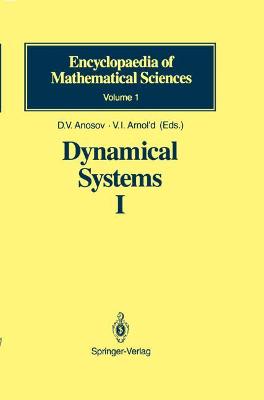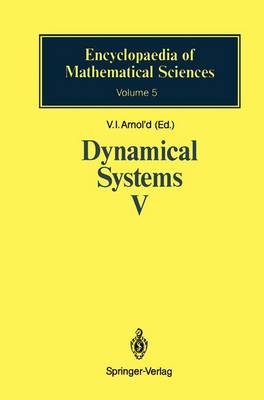Encyclopaedia of Mathematical Sciences
2 primary works
Book 1
Dynamical Systems I
by D. V. Anosov, S.K. Aranson, V. I. Arnold, I.U. Bronshtein, V. Z. Grines, and Yu.S Ilyashenko
Published 1 October 1988
From the reviews: "The reading is very easy and pleasant for the non-mathematician, which is really noteworthy. The two chapters enunciate the basic principles of the field, ... indicate connections with other fields of mathematics and sketch the motivation behind the various concepts which are introduced.... What is particularly pleasant is the fact that the authors are quite successful in giving to the reader the feeling behind the demonstrations which are sketched. Another point to notice is the existence of an annotated extended bibliography and a very complete index. This really enhances the value of this book and puts it at the level of a particularly interesting reference tool. I thus strongly recommend to buy this very interesting and stimulating book." Journal de Physique
Book 5
Dynamical Systems V
by V. I. Arnold, V.S. Afrajmovich, Yu.S Ilyashenko, and L.P. Shil'nikov
Published 6 June 1994
Bifurcation theory and catastrophe theory are two well-known areas within the field of dynamical systems. Both are studies of smooth systems, focusing on properties that seem to be manifestly non-smooth. Bifurcation theory is concerned with the sudden changes that occur in a system when one or more parameters are varied. Examples of such are familiar to students of differential equations, from phase portraits. Understanding the bifurcations of the differential equations that describe real physical systems provides important information about the behavior of the systems. Catastrophe theory became quite famous during the 1970's, mostly because of the sensation caused by the usually less than rigorous applications of its principal ideas to "hot topics", such as the characterization of personalities and the difference between a "genius" and a "maniac". Catastrophe theory is accurately described as singularity theory and its (genuine) applications. The authors of this book, previously published as Volume 5 of the Encyclopaedia, have given a masterly exposition of these two theories, with penetrating insight.

